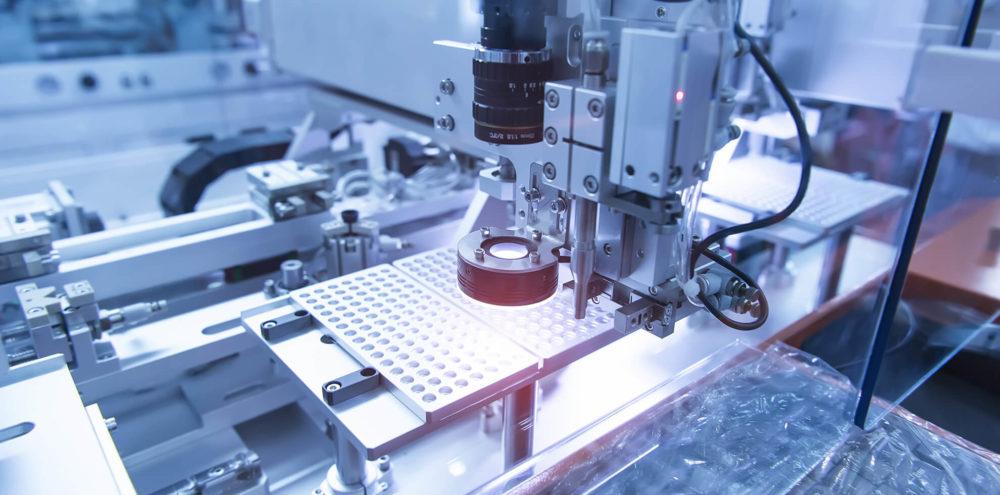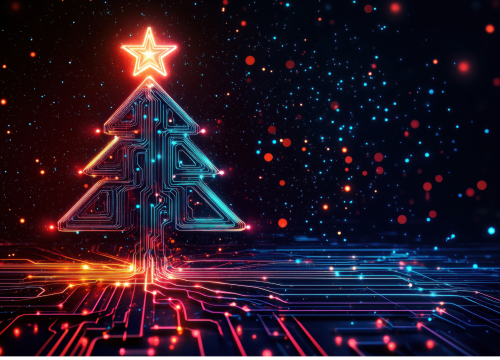
Custom Sensor Development: The Future of IoT

You can find custom sensor development in various fields, from industry, farming, health care, energy, smart homes, and cars to retail. Sensors help to prevent fires, measure the temperature of water and air, monitor the changes in working systems, and even detect earthquakes.
Using sensors, companies can increase their performance and therefore their competitiveness. In its turn, the public sector can develop infrastructure and interact with citizens in a new way.
Areas Where Sensors are Used
You have probably heard about IoT technologies. The Internet of Things (IoT) is a chain of interconnected devices and objects that exchange information without human intervention. The devices connect to the internet and transmit basic data to cloud storage, from where other gadgets with receiving sensors can collect this information and use it to perform their tasks. You can collect the data, analyze it and use it to improve your business or professional decisions.
The sensor is a core element of IoT technologies. Previously, IoT was used mostly for “smart homes.” The sensors detected movement and turned on a light or an alarm signal and even maintained a certain temperature inside the room.
Nowadays, you can find IoT technologies and custom sensor development in many areas where the automation of processes is required. Here are some of the most striking examples.
Agricultural Sector
A new way of using sensors in agriculture has greatly simplified the process of soil monitoring. Now, it is possible to control harvesting with greater accuracy at every stage. Sensors in the ground measure the amount of moisture and assess plant needs. Drones then transmit the information to engineers, who can adjust plant care in real time. Moreover, farmers can save about 25% of the harvest through online weather monitoring.
Retail Sector
One of the largest international retail chains, Walmart, with more than 10,000 stores in 30 countries, owes its success to IoT technologies. For example, they use a “smart” floor system with built-in sensors to track the customer’s journey through the whole supermarket and to analyze which products are the most interesting for customers. Then, Walmart sells the required goods and food to the customers, and the system enables them to minimize the number of expired items.
Shops without cashiers, augmented reality to present the product, cameras that can recognize the emotions of customers – all this significantly improves the quality of service.
Smart Cities
Planning transport routes based on data of people’s travels through the city, video surveillance, water level monitoring, noise, and pollution – sensors make cities more convenient and safer. The data collected gives the city authorities a better understanding of the residents’ needs.
Yinchuan, the capital of China’s province Ningxia, is remarkable as it is the only city in the world that doesn’t use bank cards, travel tickets, and cash anymore. Instead, you can use your face. To pay for a service, all you have to do is to pass facial recognition, and the required amount will be automatically charged to your account.
It is also possible to order food and other products online in a mobile application. You do not need to wait for a delivery: after paying for the purchase, you can easily pick up the goods from the nearest storage fridge. And all garbage cans are powered by solar panels. When the bin is full, the utility company receives a signal and takes it out.
Health Care System
Medical devices connected to the internet can collect data, send it to doctors, and inform them about patients’ health, complications, and dates of scheduled medical tests.
Soon, doctors will be able to remotely monitor a patient’s health and improve treatment methods. Medical sensors can also detect dangerous changes in a patient’s blood. This is crucial for people with diabetes. It is even possible to automate insulin delivery by monitoring the glucose level.
Who Should Use Custom Sensors and Why?
Custom sensors provide innovative solutions to numerous fields of application and can improve a company’s performance. These modern technologies can help your business to grow. As you know, information and data are very important, and they have to be accurate and reliable. Sensors help to collect and store data that you can analyze afterwards or react to immediately in case of emergency.
The basic types of sensors:
- Temperature sensors;
- Proximity sensors;
- Pressure sensors;
- Water quality sensors;
- Chemical sensors;
- Gas sensors;
- Smoke sensors;
- Level sensors;
- Motion detection sensors;
- Gyroscope sensors;
- Humidity sensors.
As you can see from the list, sensors can detect various parameters and react to them according to the programmed requirements. They can measure the temperature and prevent a room from overheating or freezing. They can estimate water and air quality, gas, and smoke level to prevent accidents. And many other applications.
Let’s focus on real-life examples of customer sensor development that has helped to upgrade industry processes.
Today, people do not use cash as much as before. That is why many payment systems support non-cash charges. The Parking Boxx company has come up with an idea to replace mechanical coin-operated parking meters with smart parking meters. These allow paying with credit cards and even detect the position of the car in the parking space. Additionally, they can set the parking space rate according to particular dates and hours. The implementation of the new payment system improves customer experience, security, and parking control. As for the Parking Boxx company, they have increased their productivity and therefore revenue.
Another good example is using sensors for the development of an in-building radio communications system with cloud service. The service provider had an idea for improving the safety of wireless infrastructure for buildings. The development team has designed an in-building two-way radio communications enhancement system. It has a radio console and cloud solutions to ensure that firefighters will be able to maintain communication in case of an accident inside the building.
Prediction for the Future of Sensors
Experts predict that in 2020 the Internet of Things will pass a critical point in its development and become the basis of infrastructure in almost all areas of our everyday life and industry. The life of the big city and the work of the enterprise, the interaction of man and machine, public projects and considering the needs of every citizen – all this will be based on data from sensors and devices. Intel experts have estimated that by 2030 more than 200 billion devices will be connected to the internet.
An equally important discussion is how to prevent data leakage to third parties. To date, internet technology does not protect personal data well enough. Hypothetically, a criminal can hack your gadgets and, for example, turn off the brakes in your smart car, or deactivate the alarm in your house and sneak inside without anyone noticing. Soon, developers will be working on improved security.
The Bottom Line
In the distant future, not only homes but also cities and even some countries will become “smart.” However, today many big companies engaged in the production of goods, energy, logistics, etc. are investing money in IoT technologies to increase their productivity and competitiveness.
Learn how cutting-edge technologies can introduce new features, provide more reliable measurement results, reduce the costs of your internet-based solutions, and bring your monitoring to a new level. Do not hesitate – start your custom sensor development today with our experienced team!



